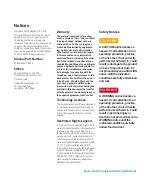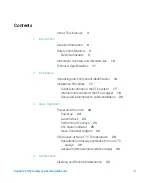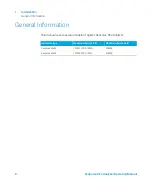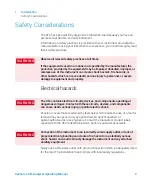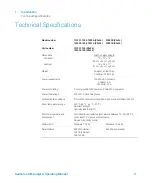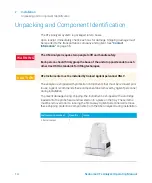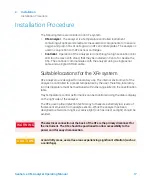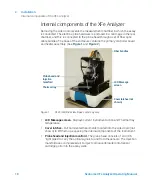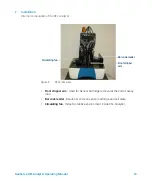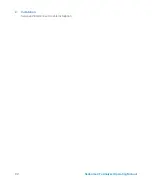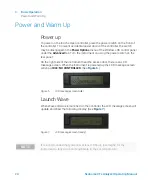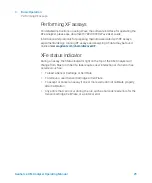
1
Introduction
Instrument Overview and Intended Use
10
Seahorse XFe Analyzer Operating Manual
Instrument Overview and Intended Use
The Agilent Seahorse XFe analyzer measures the rate of change of dissolved
oxygen and pH in the media immediately surrounding living cells cultured in a
microplate. Changes in the extracellular media are caused by the consumption
or production of analytes by the cells. Therefore, a sensitive measurement of the
media flux can be used to determine rates of cellular metabolism with great
sensitivity and in a totally non-invasive, label-free manner.
A unique feature of the Agilent Seahorse XF technology is its ability to make
accurate and repeatable measurements in as little as five minutes. The
instrument, working with a sensor cartridge, isolates a few µL of media above the
cell monolayer. Cellular metabolism causes rapid, easily measured changes to
the “microenvironment” in this small volume.
An XFe
sensor cartridge
is required to run an assay. The cartridge has 24 or 96
probes, and each probe has a single multifluor sensor spot that is sensitive to
both oxygen and proton concentration. The system measures the concentration
of each analyte over time and automatically calculates the oxygen consumption
rate (OCR) and extracellular acidification rate (ECAR) simultaneously in every
well of the microplate.
Typically, a measurement cycle is performed for 5-8 minutes. The media is
gently mixed, the probe is positioned 200 µm above the well bottom, and the
analyte levels are measured until the oxygen concentration drops approximately
20-30% and media pH declines approximately 0.1-0.2 pH units.
Baseline metabolic rates are typically measured 3-4 times, and are reported in
pmol/min for OCR and in mpH/min for ECAR, compound is added to the media
and mixed, and then the post-treatment OCR and ECAR measurements are
made and repeated. As cells shift metabolic pathways, the relationship between
OCR and ECAR changes.
The XFe system, comprising a bench top analyzer and touch screen controller, is
driven by
Wave software
. This software enables all aspects of Seahorse assays
including assay setup, instrument control, and data analysis.
Consumables are sold separately and include FluxPaks (comprising sensor
cartridges, cell plates, and calibrant) as well as a variety of Assay Kits, Reagents,
and Media. XFe Sensor Cartridges are specific for the instrument type and can
be purchased exclusively from Agilent.
Summary of Contents for Seahorse XFe
Page 1: ...Seahorse XFe Analyzer Operating Manual...
Page 4: ...4 Seahorse XFe Analyzer Operating Manual...
Page 12: ...1 Introduction Technical Specifications 12 Seahorse XFe Analyzer Operating Manual...
Page 38: ...4 Maintenance Additional Resources 38 Seahorse XFe Analyzer Operating Manual...
Page 39: ......


